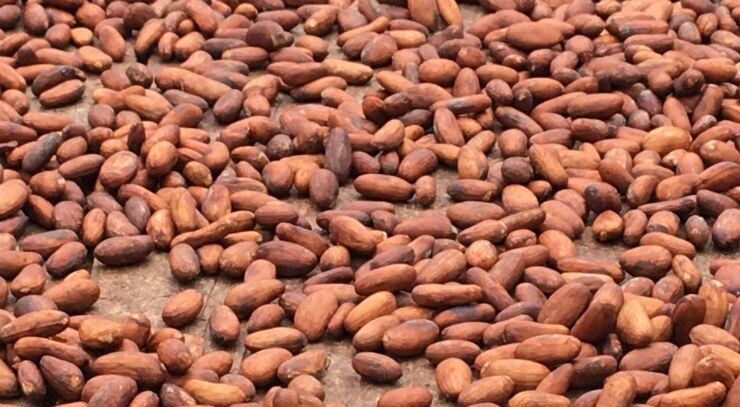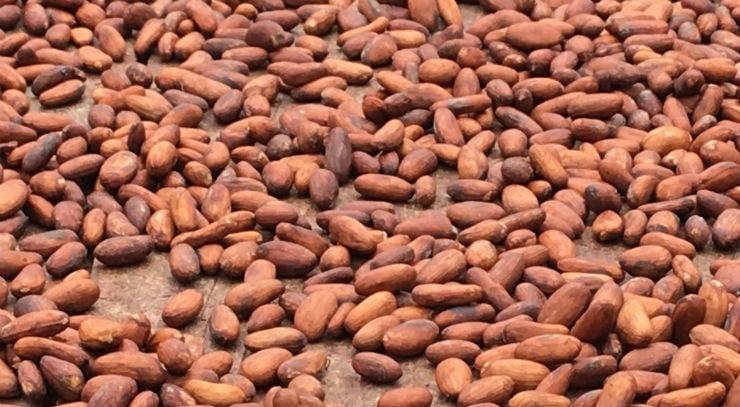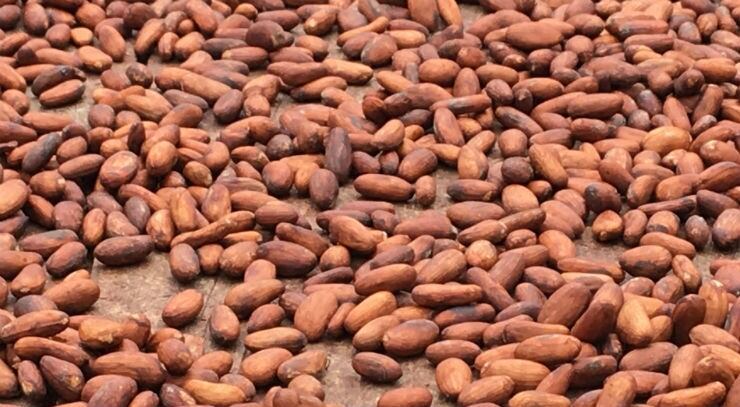Dockers in charge of unloading packaged cocoa beans from trucks are asking exporters to increase their pay to 105 CFA francs ($0.1598) per bag, up from 30 CFA francs, and have rejected an offer of 50 CFA francs per bag on Tuesday of this week, according to Reuters.
The strike is in danger of impacting the industry ahead of peak main crop harvests, exporters said, especially if it spreads to other ports. Cote d’Ivoire is the world’s largest producer of cocoa.
Soil moisture compensated for below average rainfall and high temperatures in some of the country’s cocoa-growing regions last week, while heavier rain in other regions boosted the October-to-March main crop, farmers said this week.
The country is moving into its dry season, which runs from mid-November to March, when rains and local reports say some regions have already experienced dryer weather than usual while downpours were heavier in others.
The Cote d’Ivoire government reported its cocoa farmers sent a cumulative 295,432 MT of cocoa to Ivory Coast ports for the 2022/23 season (which began 1 October, 2022), down -20.6% from the same time last year.
Delays in the transportation of cocoa supplies from farms to ports are a near-term supportive factor for cocoa prices.
Markets
On the markets, Cocoa prices extended their week-long rally, with NY cocoa posting a 5-month nearest-futures high and London cocoa posting a 2-year high, according to market data and services website barchart.com.
In its September 2022 Cocoa Market, the ICCO (International Cocoa Organization) reported that ‘ex-factory chocolate prices ‘have increased rapidly in the European Union during the past year.
Prices have increased by approximately 6% from August 2021 to August 2022, according to data. By the same token, cocoa futures prices have declined by 13% and 9% respectively on the London (ICE Futures Europe) and New York (ICE Futures US) markets.
Should cocoa prices not drive production costs in the cocoa and chocolate industry?
Cocoa grindings and processing costs account for only 57% and 55% of the ex-factory price of dark and milk chocolate bars, according to the ICCO, and only account for a fraction of the costs.
“Clearly, the rising costs of production factors having an higher impact on the cocoa processing and chocolate manufacturing process have by far outweighed the reduction in cocoa prices. Moreover, as a result of this inflationary pressure, the weights of energy, capital, sugar and butter milk prices on production costs have become even bigger than those estimated in 2018,” the ICCO reported.
Meanwhile, recent global cocoa demand has been mixed. The National Confectioners Association last reported North American Q3 cocoa grindings fell -3.4% y/y to 119,244 MT. Also, the European Cocoa Association on 13 October reported that European Q3 cocoa grindings fell -1.6% y/y to 369,679 MT, the first y/y decline since Q1 of 2021.
Germany’s cocoa grindings fell by 4.7% to 100,149 tonnes. With energy prices pushing other costs higher and the possible rationing of energy in Europe this coming winter, this could take a toll on the operations of cocoa processors
Conversely, the Cocoa Association of Asia said Asia Q3 cocoa grindings rose +9.5% y/y to 231,080 MT. Also, exporter group Gepex, which includes six of the world's biggest cocoa grinding companies, reported Q3 Cote d’Ivoire cocoa grindings rose +18.1% y/y to 171.540 MT.
Barchart.com said Cocoa prices found support when the ICCO cut its 2021/22 global cocoa production estimate to 4.890 MMT on 1 September from a June forecast of 4.923 MMT and raised its 2021-22 global cocoa deficit estimate to -230,000 MT from a June forecast of -174,000 MT. In 2020/21, global cocoa production rose to a record 5.24 MMT, and in 2020/21, the global cocoa market was in a surplus of +215,000 MT.
The Netherlands-based Rabobank has also announced it has cut its Ghana 2022-23 cocoa crop estimate to 760,000 MT from a prior estimate of 800,000 MT, citing "concerns regarding fertilizer and chemical availability which is likely to stunt cocoa yields."
Nigeria, the world's fifth-largest cocoa bean producer, saw its cocoa exports fall -16% y/y to 11,094 MT due to excessive rainfall during the season.




